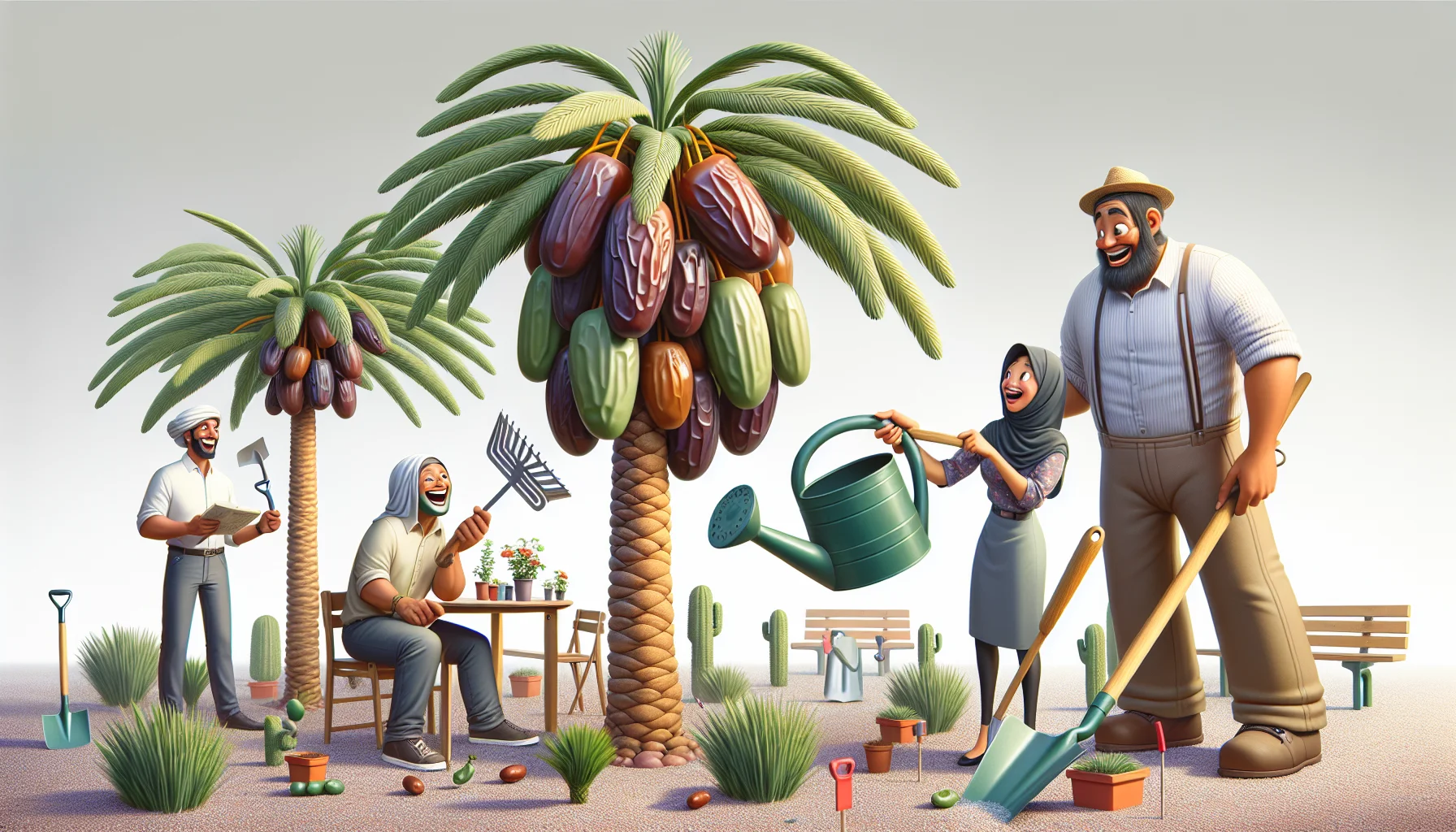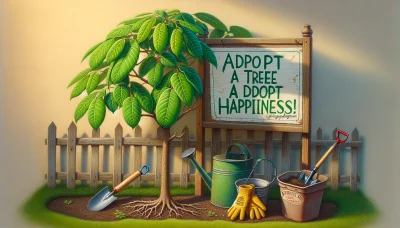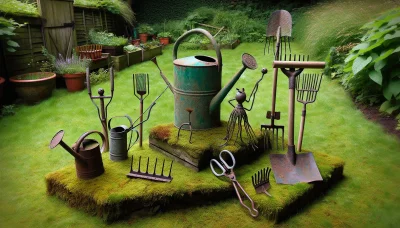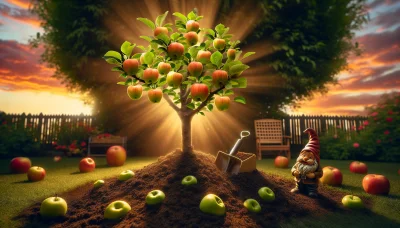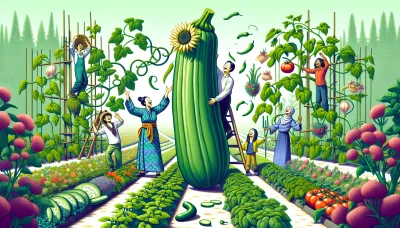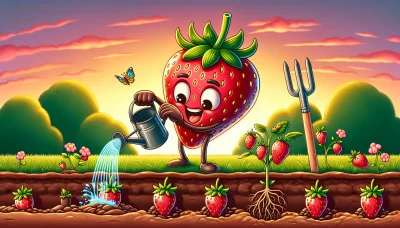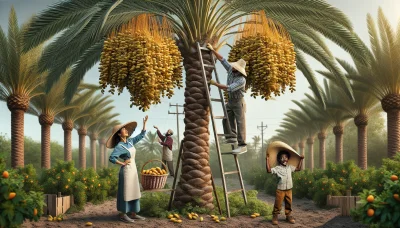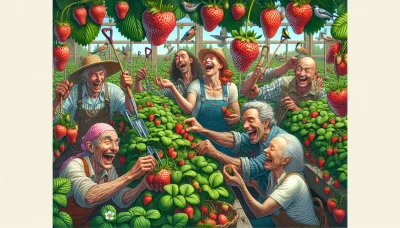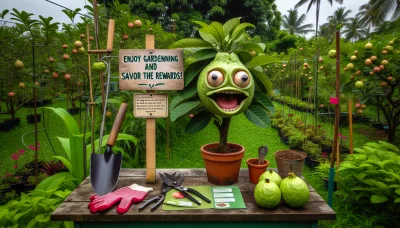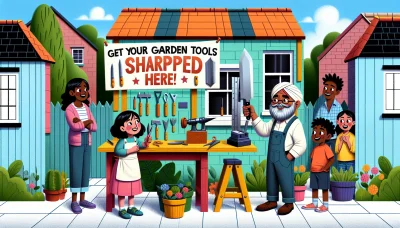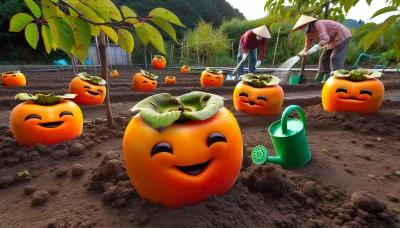Date palm trees Quiz
Test Your Knowledge
Question of
Introduction to Date Palm Trees
Date palm trees, scientifically known as Phoenix dactylifera, are a species of palm tree primarily grown for their sweet fruit, dates. Originating from the Middle East and North Africa, these trees have been cultivated since ancient times, dating back to at least 5000 B.C. Date palms are tall, typically reaching 15-25 meters in height, with a single, slender trunk and a crown of pinnate leaves that can be up to 3 meters long. They thrive in hot, arid climates and are remarkably drought-resistant, making them well-suited for desert environments. The fruit of the date palm, the date, is a staple food in many cultures and is enjoyed for its sweet taste and nutritional value.
Varieties of Date Palm Trees
- Medjool: Known for its large, sweet, and juicy fruits, this variety is often referred to as the "king of dates." Medjool dates are highly prized for their rich flavor and soft texture.
- Deglet Noor: A semi-dry date variety, Deglet Noor dates are smaller and have a firmer texture than Medjools. They are known for their delicate flavor and are often used in cooking and baking.
- Barhi: Recognized for their round shape and small size, Barhi dates are exceptionally sweet. They can be eaten fresh or dried, offering a unique, creamy flavor when fresh.
- Halawy: These dates are small to medium in size, with a soft, sticky texture and a sweet, caramel-like flavor. Halawy dates are perfect for those who enjoy a very sweet date.
- Khadravi: Known for their large size and oblong shape, Khadravi dates have a rich, sweet flavor. They are less common but highly valued for their unique taste and texture.
- Zahidi: Zahidi dates are medium-sized, with a golden-yellow color. They have a firmer flesh and are not as sweet as other varieties. Zahidis are often used in cooking for their nutty flavor.
Cultivation and Care
Date palm trees thrive in environments that meet specific conditions, making their cultivation a task that requires attention to detail. These trees are best suited to sandy, well-drained soils which allow for deep root growth and adequate water drainage. Climate plays a crucial role in their development, with date palms favoring hot, arid regions where temperatures seldom drop below freezing. Despite their tolerance for drought, regular and deep watering is essential for their growth, especially during the hot summer months. Ensuring these conditions can lead to successful cultivation of date palm trees, yielding a bounty of dates under the right care.
Planting Your Date Palm Tree
- Choose a sunny location with well-draining soil.
- Ensure the site is away from buildings and power lines, allowing plenty of room for growth.
- Test the soil pH to ensure it falls between 6 and 7.
- Amend the soil with organic matter if necessary to improve drainage and fertility.
- Dig a hole that is twice as wide and just as deep as the root ball of your date palm.
- Place the tree in the hole, making sure it's standing straight.
- Backfill the hole with soil, gently tamping down to remove air pockets.
- Water the date palm thoroughly after planting.
- Mulch around the base of the tree to retain moisture and regulate soil temperature.
- Water the tree regularly during its first growing season to establish a deep, extensive root system.
Common Pests and Diseases
The date palm tree, a vital fruit crop in many arid regions, faces threats from various pests and diseases, significantly impacting yield and quality. Among the most notorious pests are the Red Palm Weevil and the Dubas Bug. The Red Palm Weevil larvae burrow into the trunk, weakening and eventually killing the tree if not controlled. Management strategies include pheromone traps and removing infested trees to prevent spread. The Dubas Bug, on the other hand, sucks sap from the leaves, leading to reduced photosynthesis and sooty mold growth due to the honeydew it secretes. Effective control measures include the use of systemic insecticides and the maintenance of tree health to enhance resistance.
When it comes to diseases, Bayoud disease caused by the fungus Fusarium oxysporum, and the Date Palm Leaf Spot caused by the fungus Mycosphaerella tassiana, are significant concerns. Bayoud disease leads to wilt and death of the palm, and is managed by removing and burning infected trees and using disease-free planting material. For Date Palm Leaf Spot, fungicidal treatments and removing affected leaves can help manage the disease. Regular monitoring and integrated pest management practices are crucial in mitigating the impact of these pests and diseases on date palm cultivation.
Harvesting Dates
To harvest dates from your date palm trees, it's essential to wait until they are fully ripe for the best flavor and texture. Typically, the harvesting season falls between late summer and early fall, but this can vary based on your local climate and the specific variety of date palm you are growing. Dates are ripe when they have turned a deep brown or amber color and are slightly soft to the touch. To harvest, gently twist the fruit off the stem or use pruning shears to cut the cluster from the tree. After harvesting, dates can be eaten fresh or dried for longer storage. To dry dates, lay them out in a single layer under the sun for several days, turning them occasionally, until they are dehydrated but still plump. Store dried dates in an airtight container in a cool, dry place, where they can last for several months. Dates are a versatile fruit that can be used in a variety of dishes, from sweet desserts to savory meals, making them a valuable addition to your pantry.
Environmental Benefits of Date Palm Trees
Date palm trees offer a multitude of environmental benefits that contribute significantly to ecological balance and sustainability. One of the primary advantages of growing date palm trees is their capability for carbon sequestration. By absorbing carbon dioxide from the atmosphere during their photosynthesis process, these trees play a crucial role in mitigating the impact of climate change. Additionally, date palm trees provide essential habitats for a variety of wildlife species. Their dense foliage and height offer shelter and nesting sites for birds, while the ecosystem around the roots can support numerous microorganisms and insects, creating a biodiverse environment. Thus, the cultivation of date palm trees not only supports agricultural economies but also enhances environmental health and biodiversity.
